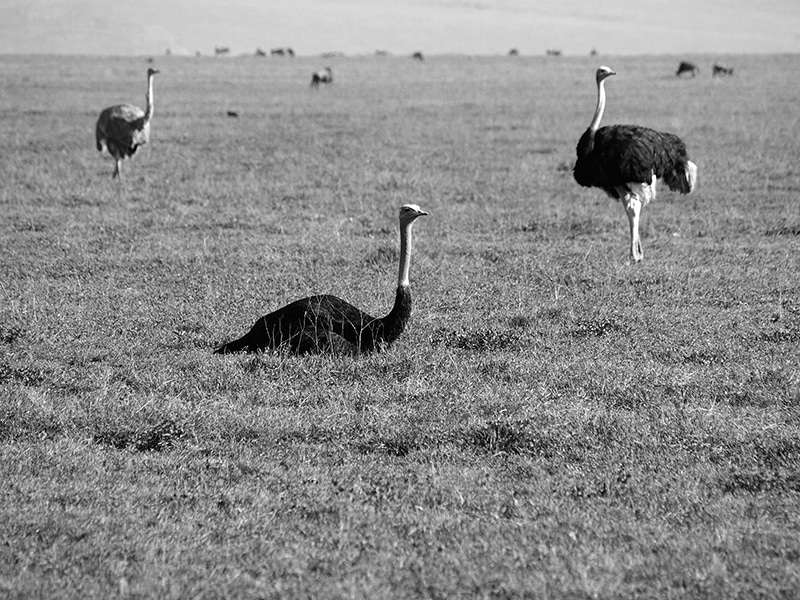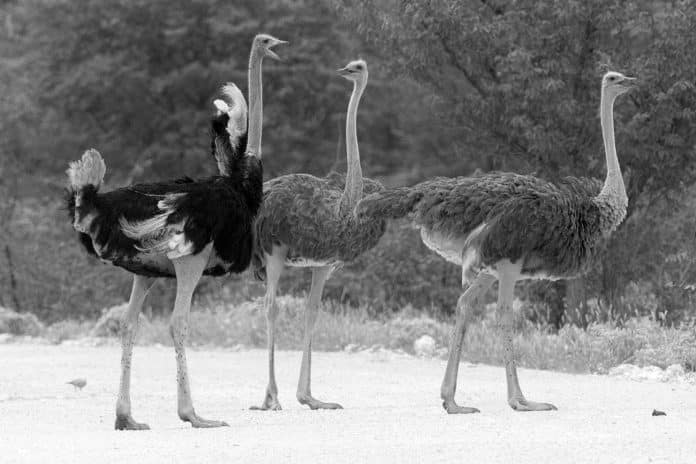Unveiling the Majestic Common Ostrich of Tanzania: A Closer Look at Africa’s Largest Bird
The Common Ostrich, scientifically known as Struthio camelus, is a magnificent creature that roams the vast plains of Tanzania, captivating the hearts of both locals and tourists alike. As Africa’s largest bird, the Common Ostrich of Tanzania is a true symbol of grandeur and elegance. In this article, we will take a closer look at the physical characteristics, habitat, behavior, diet, reproduction, and conservation efforts surrounding this majestic creature.
Physical characteristics of the Common Ostrich of Tanzania
The Common Ostrich is an impressive bird that stands tall with its long neck and strong legs. It reaches an average height of 9 feet and can weigh up to 350 pounds, making it the heaviest bird on the planet. Its long legs are perfectly adapted for running, allowing it to reach speeds of up to 60 miles per hour. The ostrich’s most recognizable feature is its large, round eyes, which are framed by long, thick eyelashes. These eyes provide the bird with excellent vision, enabling it to spot predators from a distance.
The plumage of the Common Ostrich is predominantly black and white, with males displaying more vibrant colors than females. Males have black feathers with white wings and tails, while females have grayish-brown feathers. However, both genders have soft, fluffy feathers on their bodies that help regulate their body temperature in the scorching Tanzanian heat.
Habitat and distribution of the Common Ostrich in Tanzania
The Common Ostrich is found in various regions of Tanzania, including the Serengeti National Park, Ngorongoro Conservation Area, and Tarangire National Park. These areas offer vast grasslands and open spaces, which are ideal for the ostrich’s running abilities. The bird is well-adapted to the arid and semi-arid regions of Tanzania, where it can withstand high temperatures and limited water sources.

Although the Common Ostrich is primarily found in Tanzania, it also inhabits other parts of Africa, such as Kenya, Ethiopia, and South Africa. Its distribution is influenced by the availability of food and suitable nesting areas. These birds are highly adaptable and can survive in diverse environments, ranging from deserts to savannas.
Behavior and social structure of the Common Ostrich
The Common Ostrich is a social bird that lives in groups known as flocks. These flocks can consist of up to 50 individuals and are led by a dominant male and female pair. The dominant male, also called the alpha male, defends the territory and mates with multiple females within the flock. The female ostriches, on the other hand, lay their eggs in a communal nest, which is a shallow depression in the ground.
When it comes to communication, the Common Ostrich uses a variety of vocalizations, such as hisses, booms, and grunts. These sounds serve as a way to establish dominance, attract a mate, or warn others of potential danger. Additionally, ostriches use visual displays, such as spreading their wings and tail feathers, to communicate their intentions and emotions.
Diet and feeding habits of the Common Ostrich
The Common Ostrich is an omnivorous bird with a diverse diet. Its main source of nutrition comes from plants, including grasses, leaves, and seeds. They are also known to consume various insects and small animals, such as lizards and rodents. Due to their inability to fly, ostriches rely on their strong beak and powerful digestive system to break down tough plant material.
These birds have a unique feeding habit known as “gizzard stones.” They swallow small stones that help grind the food in their muscular gizzard, aiding in digestion. Ostriches can go for long periods without water, as they obtain sufficient moisture from the plants they consume.
Reproduction and life cycle of the Common Ostrich
The reproductive cycle of the Common Ostrich is a fascinating process. During the breeding season, the dominant male will perform an elaborate courtship display to attract females. This display includes flapping its wings, shaking its tail feathers, and making booming sounds. Once a female is impressed, she will mate with the dominant male and lay her eggs in the communal nest.
The female can lay up to 60 eggs throughout the breeding season, but not all of them will hatch successfully. The eggs are incubated by the females during the day and by the males during the night, ensuring a constant temperature for optimal development. After approximately 42 days, the adorable ostrich chicks hatch, covered in soft down feathers. They are immediately able to walk and follow their parents, who provide them with protection and guidance until they reach maturity at around 2 to 3 years of age.
Predators and threats to the Common Ostrich population
While the Common Ostrich is a powerful and resilient bird, it still faces threats from various predators in Tanzania. Lions, hyenas, cheetahs, and eagles are among the main predators of ostriches. These predators often target young chicks or weak individuals that are unable to defend themselves effectively.
Additionally, human activities pose a significant threat to the Common Ostrich population. Habitat loss due to agricultural expansion and illegal hunting for their feathers, skin, and meat have led to a decline in their numbers. These activities have prompted conservation efforts to protect the ostrich and ensure its survival for future generations.
Conservation efforts for the Common Ostrich in Tanzania
Tanzania has taken significant steps to conserve the Common Ostrich population within its borders. National parks and conservation areas have been established to provide protected habitats for these birds. Strict regulations and anti-poaching measures are enforced to deter illegal hunting and trade of ostrich products.
Furthermore, educational programs and community outreach initiatives have been implemented to raise awareness about the importance of conserving the Common Ostrich and its ecosystem. These efforts aim to promote sustainable tourism and provide local communities with alternative livelihoods that do not rely on exploiting wildlife resources.
Interesting facts about the Common Ostrich
- The Common Ostrich lays the largest eggs of any bird species, with each egg weighing around 3 pounds.
- Ostriches have the largest eyes of any land animal, measuring up to 2 inches in diameter.
- Despite their inability to fly, ostriches have powerful legs that can deliver lethal kicks to predators.
- The ostrich’s call can be heard up to 2 miles away, making it an effective form of long-distance communication.
- Ostriches have been recorded to live up to 40 to 50 years in the wild.
Conclusion
The Common Ostrich of Tanzania is an awe-inspiring creature that deserves our admiration and protection. Its immense size, remarkable physical adaptations, and intricate social structure make it a fascinating subject of study. As we continue to appreciate the beauty of this magnificent bird, let us also strive to preserve its habitat and ensure its survival for generations to come.
For more articles related to Wildlife in Tanzania (Animals), click here!

































